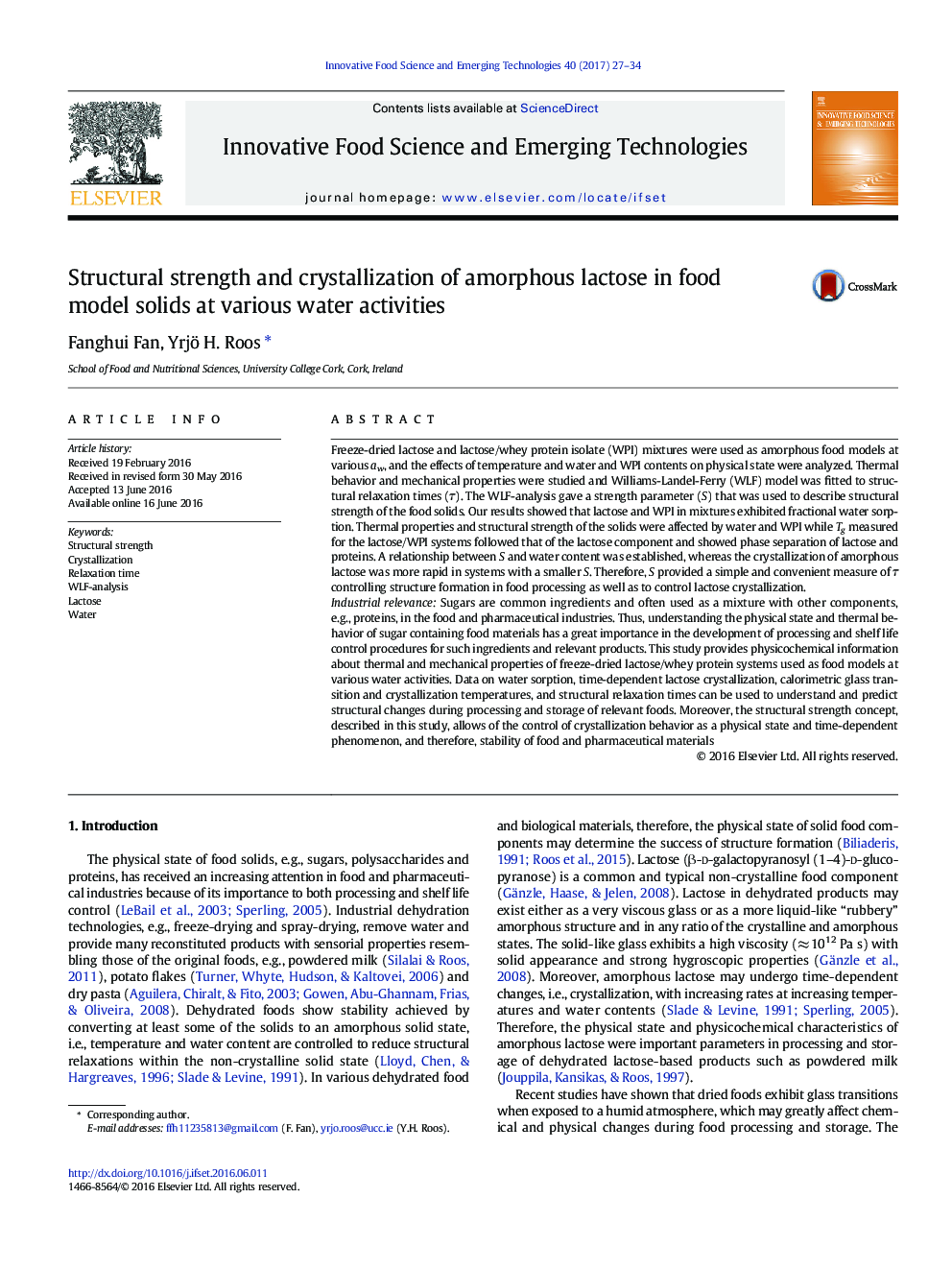| Article ID | Journal | Published Year | Pages | File Type |
|---|---|---|---|---|
| 5521794 | Innovative Food Science & Emerging Technologies | 2017 | 8 Pages |
â¢Crystallization and structural relaxation were studied in sugar/protein models.â¢Thermal behavior and structural strength were affected by water and components.â¢Strength was predicted using water content lined with crystallization temperature.â¢Strength parameter provided a simple means to describe food structure in processing.
Freeze-dried lactose and lactose/whey protein isolate (WPI) mixtures were used as amorphous food models at various aw, and the effects of temperature and water and WPI contents on physical state were analyzed. Thermal behavior and mechanical properties were studied and Williams-Landel-Ferry (WLF) model was fitted to structural relaxation times (Ï). The WLF-analysis gave a strength parameter (S) that was used to describe structural strength of the food solids. Our results showed that lactose and WPI in mixtures exhibited fractional water sorption. Thermal properties and structural strength of the solids were affected by water and WPI while Tg measured for the lactose/WPI systems followed that of the lactose component and showed phase separation of lactose and proteins. A relationship between S and water content was established, whereas the crystallization of amorphous lactose was more rapid in systems with a smaller S. Therefore, S provided a simple and convenient measure of Ï controlling structure formation in food processing as well as to control lactose crystallization.Industrial relevanceSugars are common ingredients and often used as a mixture with other components, e.g., proteins, in the food and pharmaceutical industries. Thus, understanding the physical state and thermal behavior of sugar containing food materials has a great importance in the development of processing and shelf life control procedures for such ingredients and relevant products. This study provides physicochemical information about thermal and mechanical properties of freeze-dried lactose/whey protein systems used as food models at various water activities. Data on water sorption, time-dependent lactose crystallization, calorimetric glass transition and crystallization temperatures, and structural relaxation times can be used to understand and predict structural changes during processing and storage of relevant foods. Moreover, the structural strength concept, described in this study, allows of the control of crystallization behavior as a physical state and time-dependent phenomenon, and therefore, stability of food and pharmaceutical materials
